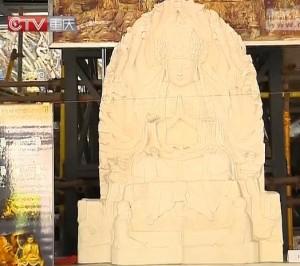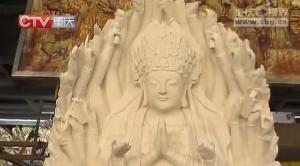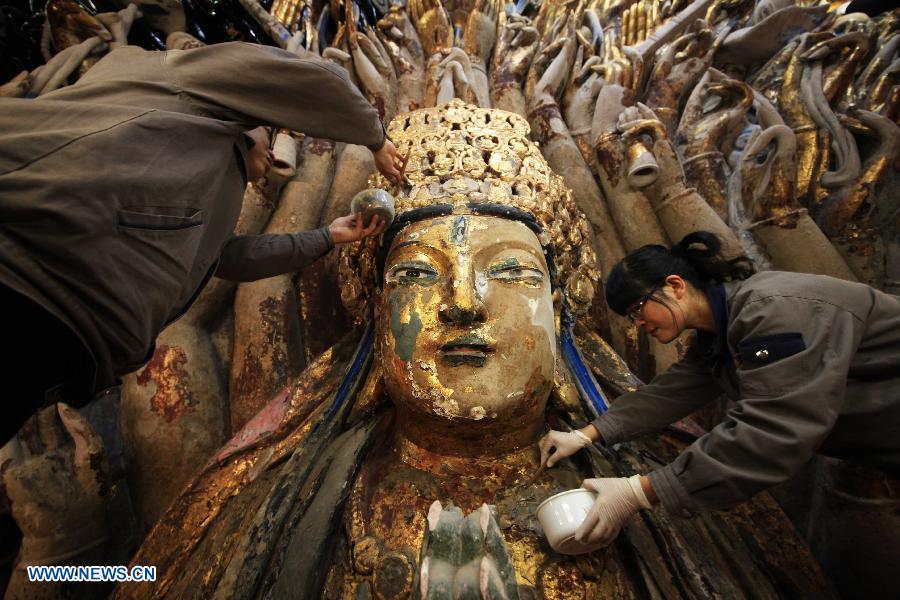The 3D printing of ancient artifacts and sculptures seems to be a growing trend, especially for those seeking to preserve our past. As time continues to pass, the wear and tear of environmental forces, can take its toll on those  things we cherish most from our history. The wonderful thing is that we do not have to rely on 2D pictures as our window into the past any longer. 3D printing is enabling museums, governments, and everyday people to preserve the works of our ancestors, with a process that involves 3D scanning and printing.
things we cherish most from our history. The wonderful thing is that we do not have to rely on 2D pictures as our window into the past any longer. 3D printing is enabling museums, governments, and everyday people to preserve the works of our ancestors, with a process that involves 3D scanning and printing.
Last week we saw how the Museum of Egyptian Archaeology, as well as a company called Threeding, were utilizing 3D printing in order to preserve our past. It turns out that the Chinese government is also using this amazing technology in two unique ways; to preserve as well as replicate the Qianshou Guanyin sculpture, which is carved into Mount Boading in the Dazu District of China.
Engineers have 3D scanned the 12.5 X 7.7 meter statue, which was carved into a cliff during the reign of the Southern Song Dynasty from 1127–1279. From the 3D scans they have printed out a replica of the famous sculpture, which is about 33% the size of the real thing. This has been a great way to preserve the sculpture digitally, so that generation after generation can appreciate the work, even as the original continues to corrode. In addition to the printing of a replica, the Chinese are also engaging in a  major project to restore the beautiful piece, which over the centuries has been the victim of nature. The replica gives engineers a wonderful model to use as a reference during the restoration process. Many of the fingers on the hands, making up this large piece of art are missing. Traditionally, restoration specialists would use molding and casting to reproduce the missing pieces. However, with the help of 3D printing, they can now save time and money, while restoring the sculpture in a much more accurate way.
major project to restore the beautiful piece, which over the centuries has been the victim of nature. The replica gives engineers a wonderful model to use as a reference during the restoration process. Many of the fingers on the hands, making up this large piece of art are missing. Traditionally, restoration specialists would use molding and casting to reproduce the missing pieces. However, with the help of 3D printing, they can now save time and money, while restoring the sculpture in a much more accurate way.
This is the first of many restoration projects that the Chinese government has planned on using this technology for. There may become a time, in the not too distant future, where all the major cultural relics in the world are backed up on a hard drive via 3D scans, insuring that other nature, human ignorance, and or accidental catastrophes will never wipe out the amazing work done by those from our past. To discuss this restoration project, head over to the Qianshou Guanyin forum thread on 3DPB.com.
(Source: CBG.cn)
Subscribe to Our Email Newsletter
Stay up-to-date on all the latest news from the 3D printing industry and receive information and offers from third party vendors.
You May Also Like
3D Printing News Briefs, April 13, 2024: Robotics, Orthotics, & Hypersonics
In 3D Printing News Briefs today, we’re focusing first on robotics, as Carnegie Mellon University’s new Robotics Innovation Center will house several community outreach programs, and Ugogo3D is now working...
3D Printing Webinar and Event Roundup: March 24, 2024
We’ve got a very busy week of webinars and events, starting with Global Industrie Paris and a members-only roundtable for AM Coalition. Stratasys will continue its advanced in-person training and...
MIMO TECHNIK, ASTRO Test Lab & LEAP 71 Combine Powers for Computational Engineering in Aerospace 3D Printing
California-based MIMO TECHNIK, a service bureau catering to demanding clients in the New Space and defense sectors, operates with six SLM 500s, four SLM 280s, and three SLM 125s. ASTRO...
EOS Taps 1000 Kelvin for “First” AI Co-pilot for 3D Printing
Additive manufacturing (AM) startup 1000 Kelvin has joined forces with EOS to integrate AMAIZE, a pioneering artificial intelligence (AI) co-pilot for AM, into the EOS software suite. The solution aims...






























